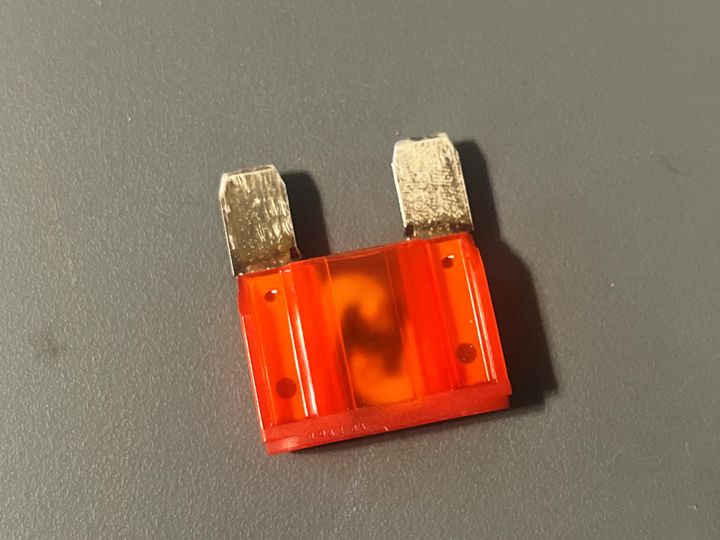


The alternator is a vital component that keeps your car's electrical system running smoothly. It charges the battery while the engine is running, ensuring a steady power supply for all electrical components. However, if the alternator fuse blows, it can disrupt the entire charging system, leading to various electrical issues. This article will guide you through the telltale signs of a blown alternator fuse and the steps to diagnose and resolve the problem.

The alternator fuse acts as a safety mechanism, protecting the alternator and its associated circuits from excessive current flow, which could potentially cause damage or even start a fire. If this fuse blows, it can prevent the alternator from charging the battery, leading to a range of electrical problems.
In this article, we'll explore the symptoms of a blown alternator fuse, how to inspect and test the fuse, and the steps involved in replacing it. We'll also discuss the importance of addressing any underlying issues that may have caused the fuse to blow.
Recognizing the signs of a blown alternator fuse is crucial. Here are some common symptoms to watch out for:
| Symptom | Description |
|---|---|
| Dead Battery or Battery Not Charging | If the alternator fuse is blown, the alternator cannot charge the battery while the engine is running, leading to a drained battery and potential electrical component failure. |
| Dimming Headlights or Electrical Issues | As the battery drains, you may notice dimming headlights or other electrical accessories behaving erratically, such as issues with the radio, power windows, or interior lights. |
| Battery Warning Light Illuminated | Most modern vehicles have a battery warning light on the dashboard that illuminates when there's an issue with the charging system, alerting you to a potential problem. |
| Electrical Accessories Not Working Properly | As the battery drains, various electrical accessories may not function correctly or fail to work at all, including the climate control system, power seats, or other electrically powered components. |
If you suspect a blown alternator fuse, the next step is to locate and inspect it. Here's how:
Locate the Fuse in the Fuse Box/Panel:
Consult your owner's manual to find the exact location and amperage rating of the alternator fuse.
The fuse box may be located under the dashboard, in the engine compartment, or in the trunk, depending on your vehicle's make and model.
Check for Physical Damage:
Carefully remove the alternator fuse from the fuse box and inspect it for any signs of physical damage.
A blown fuse will often have a melted or burned appearance on the metal strip inside.
Test with a Multimeter:
If the fuse doesn't show obvious damage, use a multimeter to test its continuity.
Set the multimeter to the ohms or continuity setting, and place one probe on each metal end of the fuse.
If the multimeter shows no reading or an infinite resistance reading, the fuse is likely blown and needs to be replaced.
If your inspection confirms a blown alternator fuse, it's time to replace it. Follow these steps:
Obtain the Correct Replacement Fuse:
Ensure you have the correct replacement fuse with the proper amperage rating.
Using an incorrect fuse rating can potentially cause further damage to your vehicle's electrical system.
Consult your owner's manual or an automotive parts store to obtain the correct replacement fuse.
Safely Remove and Replace the Fuse:
Turn off the ignition and disconnect the negative battery cable to prevent electrical shorts or shocks.
Locate the fuse box and remove the blown fuse using the appropriate fuse puller tool or needle-nose pliers.
Insert the new fuse into the same slot, ensuring it's securely in place.
Reconnect the negative battery cable and turn on the ignition to verify the electrical system is functioning correctly.
Monitor for Recurring Issues:
After replacing the alternator fuse, monitor your vehicle for any recurring issues.
If the new fuse blows again shortly after replacement, there may be an underlying problem that needs to be addressed, such as a faulty alternator, loose battery connections, or other electrical system issues.
In such cases, it's recommended to have your vehicle inspected by a professional mechanic or an automotive electrician to identify and resolve the root cause.
A blown alternator fuse can cause various electrical issues in your vehicle, ranging from a dead battery to malfunctioning electrical accessories. By recognizing the symptoms, inspecting the fuse, and replacing it if necessary, you can help ensure your vehicle's charging system is functioning correctly.
However, it's crucial to address any underlying issues that may have caused the fuse to blow. Ignoring these problems could lead to further electrical system damage or potential safety hazards. If you're unsure about any aspect of diagnosing or replacing the alternator fuse, or if you encounter recurring issues, seek professional assistance from a qualified mechanic or automotive electrician.
The primary symptoms of a blown alternator fuse include a dead battery or battery not charging, dimming headlights or electrical issues, the battery warning light illuminated on the dash, and electrical accessories not functioning properly.
Consult your owner's manual to find the exact location and amperage rating of the alternator fuse, which is typically located in the fuse box under the dashboard, in the engine compartment, or in the trunk.
A blown alternator fuse will often have a melted or burned appearance on the metal strip inside, indicating physical damage.
Set the multimeter to the ohms or continuity setting, and place one probe on each metal end of the fuse. If the multimeter shows no reading or an infinite resistance reading, the fuse is likely blown.
Using an incorrect fuse rating can potentially cause further damage to your vehicle's electrical system, so it's crucial to obtain the correct replacement fuse with the proper amperage rating.
Turn off the ignition and disconnect the negative battery cable to prevent electrical shorts or shocks before removing and replacing the fuse.
If the new fuse blows again shortly after replacement, there may be an underlying problem that needs to be addressed, such as a faulty alternator, loose battery connections, or other electrical system issues.
Ignoring underlying issues that caused the fuse to blow could lead to further electrical system damage or potential safety hazards, so it's recommended to have your vehicle inspected by a professional if recurring issues persist.
If you're unsure about any aspect of diagnosing or replacing the alternator fuse, or if you encounter recurring issues, seek professional assistance from a qualified mechanic or automotive electrician.
Yes, a blown alternator fuse can potentially cause safety hazards if underlying issues are not addressed, as it can lead to further electrical system damage or potential fire risks.

Miguel started tinkering with car radios as a teenager, fascinated by the intricate dance of wires and circuits. This passion led him to pursue a career as an automotive electrician. For the past 10 years, Miguel has tackled everything from flickering headlights to mysterious electrical gremlins. He thrives on troubleshooting electrical problems and enjoys sharing his knowledge to empower car owners to understand their vehicles better.



